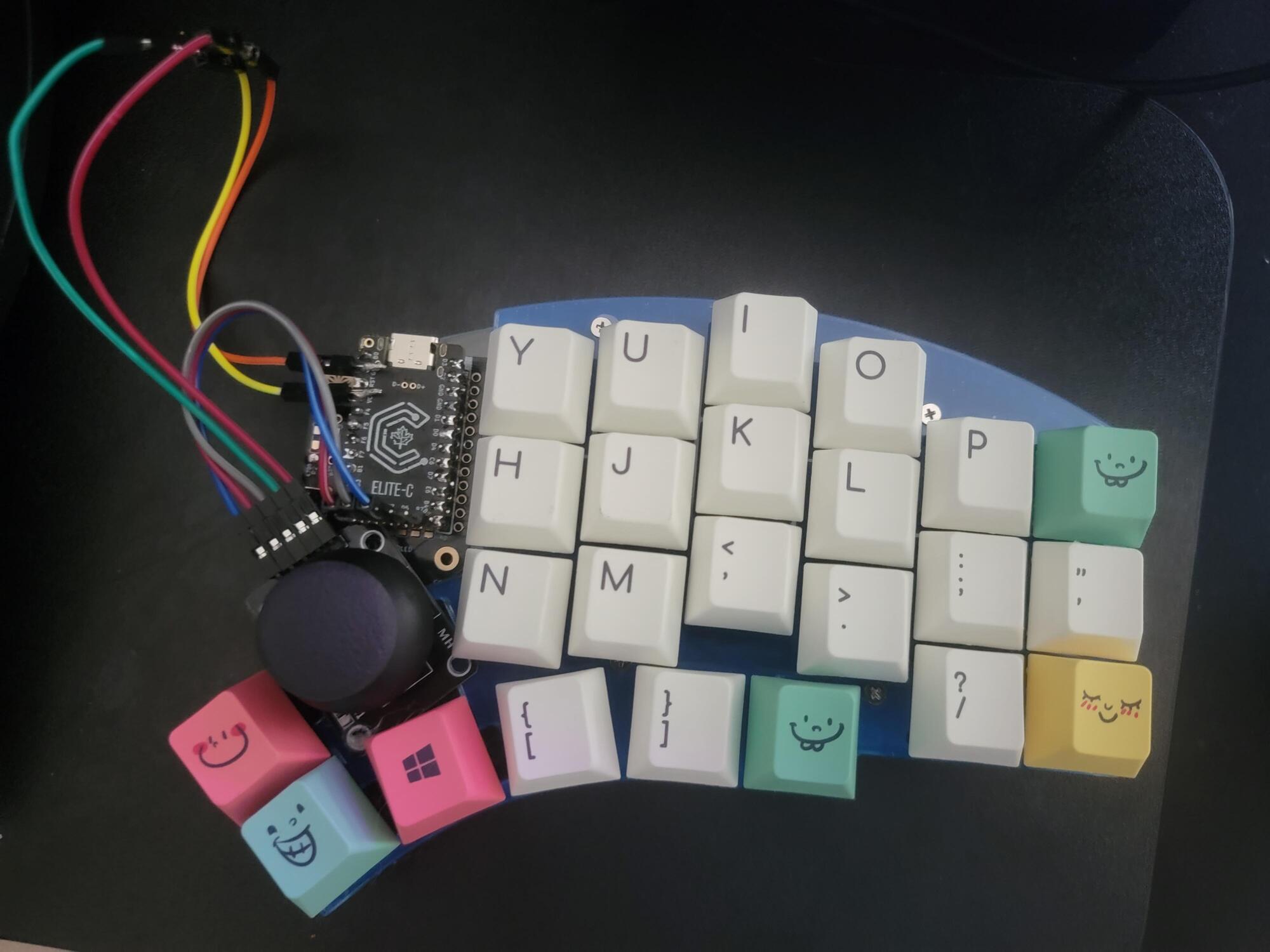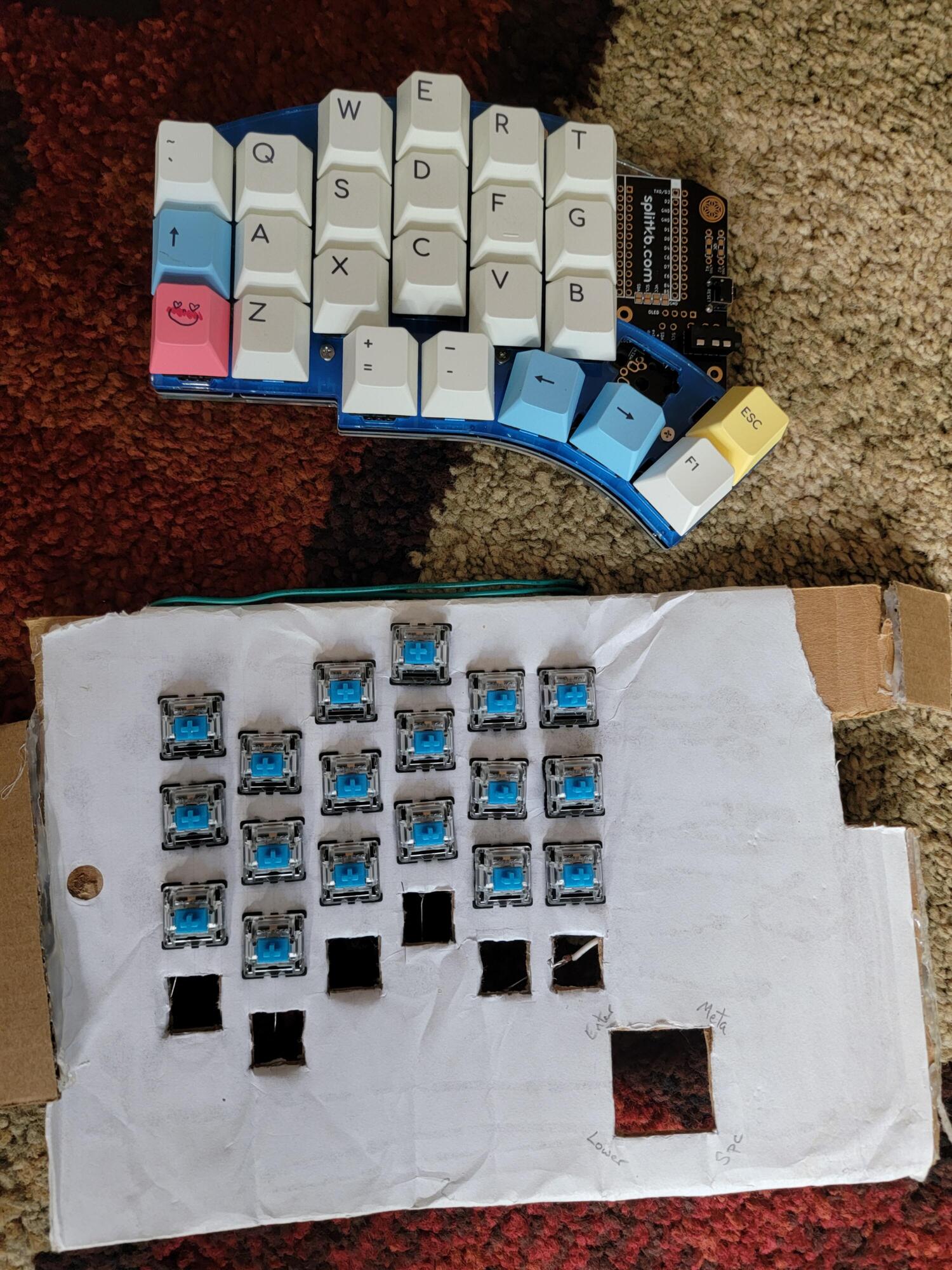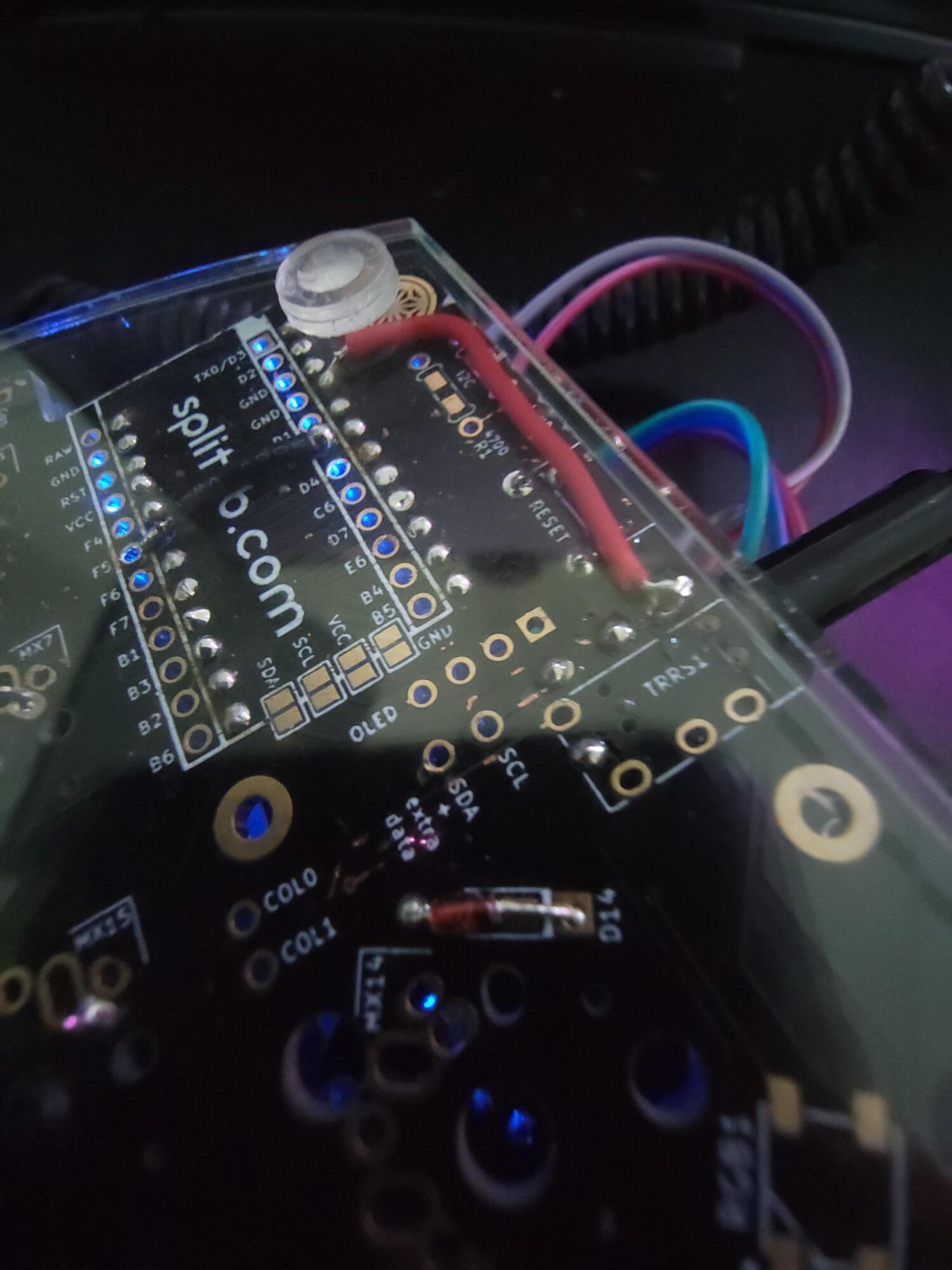Building a keyboard (part 4)
Finishing assembly! This was not as easy as I expected…
The assembly is complete! Here’s how it currently looks:

The first step was to find the appropriate keys for the right side, since I’d been using some placeholders:

This greatly reduced the level of anxiety I felt while looking at the project. Next, I soldered on the keys/reset switch/TRRS jack while waiting for another microcontroller to show up in the mail:

It was pretty cool to see the left half with all the keys on it. You can see that not much remains of the original prototype.

Eventually, the second Elite-C was delivered, and I soldered it on, flashed the
firmware to both halves and plugged it in. However, upon plugging it in, I
discovered something pretty strange - the left side would work, but not the
right. If I plugged in the right half instead, the right half would work but not
the left. The only additional clue I had was that the light on the side that
wasn’t plugged it was blinking instead of being constantly on. This was
perplexing. I tried a couple software fixes first - setting EE_HANDS and
explicitly telling each microcontroller whether it was the left or right side
(and correspondingly whether it was the host device or not), but that didn’t
help. I got out a multimeter and checked that each pin of the trrs jack was
connected to the corresponding ring on the cable, but that seemed correct. I
checked with the voltmeter to see if both halves were receiving power, and
noticed that the side plugged in showed 5V between VCC and GND, but the other
side showed something closer to 3.3V - I figured that maybe the TRRS cable only
sends over 3.3V, and that it was probably fine. In a fit of desperation, I even
took apart an old split keyboard I had to harvest the 4.7k resistors to try to
enable I2C. However, the Kyria only uses I2C as a local protocol to talk to the
OLED display if present, or other peripherals that one might want to attach.
Disheartened and questioning my abilities as an engineer, I gave up.
When I woke up this morning, I couldn’t stop thinking about it. The 3.3V number on the secondary board seemed odd, and I wondered if it wasn’t actually receiving enough power - maybe there was some onboard capacitors that tried to at least get the board to it’s minimum operating voltage? I figured it was better to spend a few minutes debugging this and show up to work a bit late than think about this all day and not get any work done, so I got out the multimeter, found the Kyria’s wiring diagram and started checking that the TRRS jack was connected to the pins that it should have been. On the left half - no issues. On the right half, VCC was not connected to the jack! This made sense since the board was pretty scuffed up from removing the perfboard and freeing the original MC. To fix it, I added this hack:

Maybe I’m not a terrible engineer after all ;)
It’s such an amazing feeling to have the assembly for this project complete. Only took me four years. I’ve already started playing around with the firmware and I have a basic mode working where the joystick emulates a mouse, and pushing select on the joystick switches the mode to have it emulate keys instead. However, I’m hitting a bit of an issue there where the range and accuracy of the joystick isn’t great. I tried to correct this in software, but quickly realized that while I can get it usable, I can’t get it to a state where I’d want to use it. I’ve ordered some other joysticks that had better reviews to see if that can fix the problem. Overall, pretty pleased with the progress, and I’ve definitely gained some new hardware hacking skills. Really looking forward to hacking on the firmware!
